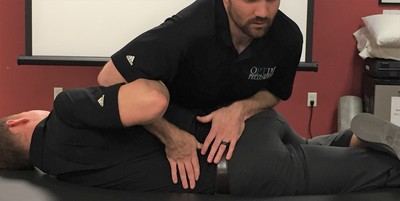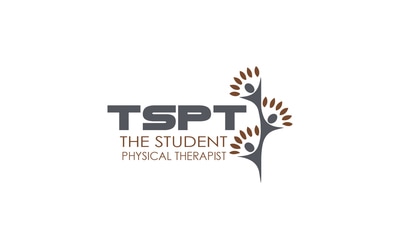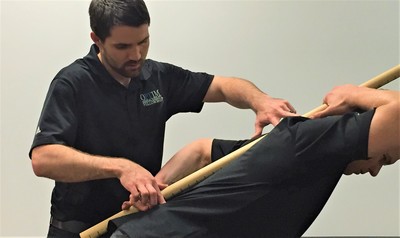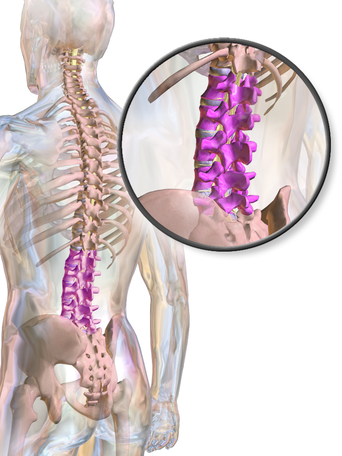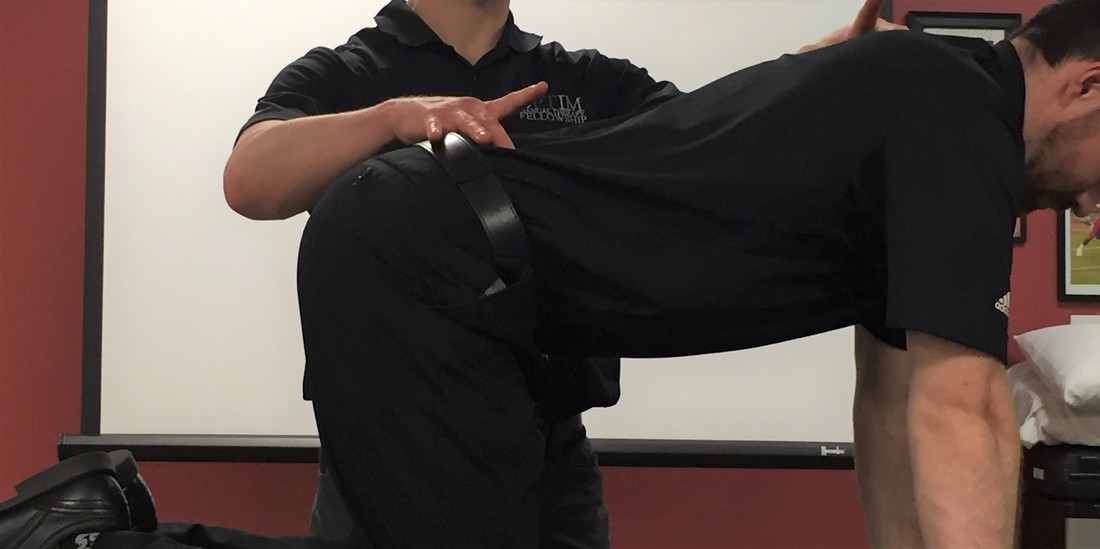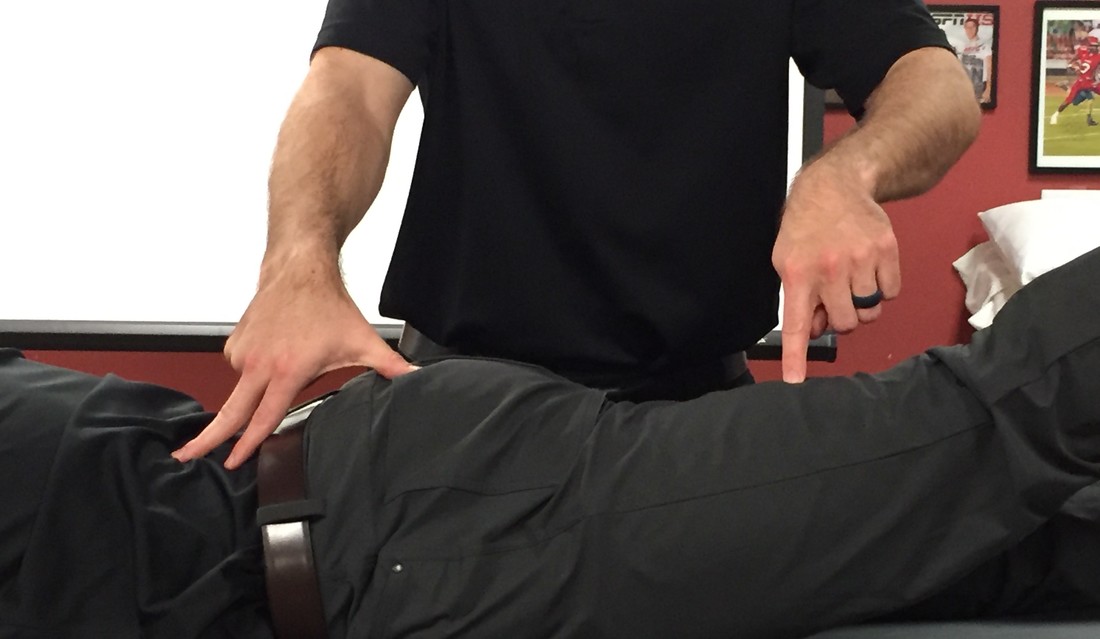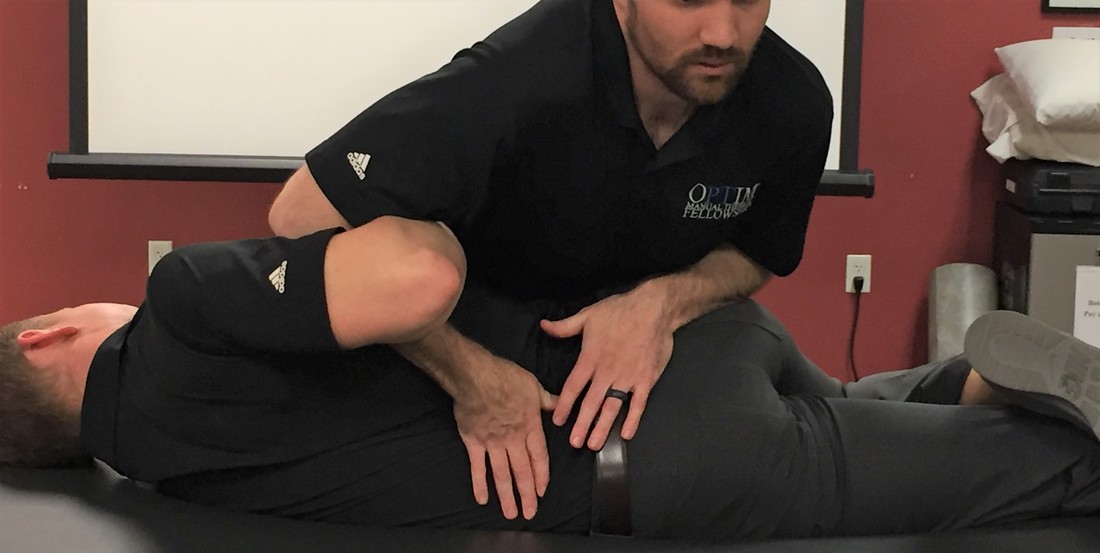- Home
- About Us
- TSPT Academy
- Online Courses
-
Resources
- Newsletter
- Business Minded Sports Physio Podcast
- Day in the Life of a Sports PT
- Residency Corner
-
Special Tests
>
-
Cervical Spine
>
- Alar Ligament Test
- Bakody's Sign
- Cervical Distraction Test
- Cervical Rotation Lateral Flexion Test
- Craniocervical Flexion Test (CCFT)
- Deep Neck Flexor Endurance Test
- Posterior-Anterior Segmental Mobility
- Segmental Mobility
- Sharp-Purser Test
- Spurling's Maneuver
- Transverse Ligament Test
- ULNT - Median
- ULNT - Radial
- ULNT - Ulnar
- Vertebral Artery Test
- Thoracic Spine >
-
Lumbar Spine/Sacroiliac Joint
>
- Active Sit-Up Test
- Alternate Gillet Test
- Crossed Straight Leg Raise Test
- Extensor Endurance Test
- FABER Test
- Fortin's Sign
- Gaenslen Test
- Gillet Test
- Gower's Sign
- Lumbar Quadrant Test
- POSH Test
- Posteroanterior Mobility
- Prone Knee Bend Test
- Prone Instability Test
- Resisted Abduction Test
- Sacral Clearing Test
- Seated Forward Flexion Test
- SIJ Compression/Distraction Test
- Slump Test
- Sphinx Test
- Spine Rotators & Multifidus Test
- Squish Test
- Standing Forward Flexion Test
- Straight Leg Raise Test
- Supine to Long Sit Test
-
Shoulder
>
- Active Compression Test
- Anterior Apprehension
- Biceps Load Test II
- Drop Arm Sign
- External Rotation Lag Sign
- Hawkins-Kennedy Impingement Sign
- Horizontal Adduction Test
- Internal Rotation Lag Sign
- Jobe Test
- Ludington's Test
- Neer Test
- Painful Arc Sign
- Pronated Load Test
- Resisted Supination External Rotation Test
- Speed's Test
- Posterior Apprehension
- Sulcus Sign
- Thoracic Outlet Tests >
- Yergason's Test
- Elbow >
- Wrist/Hand >
- Hip >
- Knee >
- Foot/Ankle >
-
Cervical Spine
>
- I want Financial Freedom
- I want Professional Growth
- I want Clinical Mastery
Lumbar Spine/Sacraliliac Joint
Range of Motion
|
ROM of Lumbar Spine:
Flexion: ~60 degrees (double inclinometer); 5-7 in (Modified-Schober) Extension: ~35 degrees (double inclinometer); 1-3 in (Modified-Schober) Lateral Flexion: 25-30 degrees (double inclinometer) Thoracolumbar Lateral Flexion: assess distance from middle finger tip to floor (compare side-to-side) Rotation: not assessed to due difficulty differentiating from T-spine Lumbar Clearing Test: Lumbar Quadrant Test Sacrailiac Clearing Test: Sacral Clearing Test (Due to the low diagnostic accuracy of this test, it is best to follow the cluster below for truly assessing the SI joint) |
Manual Muscle Tests
Coming soon...
Special Tests
Lumbosacral Research
Cluster for Patients Likely to Benefit from Spinal Manipulation (Childs et al, 2004):
-Duration of current low back pain for less than or equal to 16 days
-No symptoms below the knee
-FABQ work subscale score 18 points or less
-Segmental mobility testing results in finding 1 or more hypomobile segments in the lumbar spine
-Hip internal rotation with at least one hip having at least 35 degrees of internal rotation
1-2 positive: -LR: .1
4-5 positive: +LR: 13.2
Cluster for Patients Likely to Benefit from Lumbar Stabilization Exercise Training (Hicks et al, 2005):
-Age<40
-Avg Straight Leg Raise > 91 degrees
-Positive Prone Instability Test
-Aberrant movement present (found during lumbar ROM test). Often described as instability catch, painful arc of motion, Gower's sign, or a reversal of lumbopelvic motion
1 positive: -LR: .2
2 positive: -LR: .3
3 or 4 positive: +LR: 4.0
Cluster for Patients with Low Back Pain Likely to Benefit from Mechanical Traction (Cai et al 2009 & Fritz et al 2007):
-FABQ-W score < 21
-No neurological deficit involvement
-Age>30
-Non-manual work job status
3 positive: Sn .76, Sp .75
4 positive: Sn .36, Sp .96
Cluster for Pain Originating from Sacroiliac Joint (Stuber 2007):
-Sacral Clearing Test
-SIJ Compression
-Distraction Test
-POSH Test
-Gaenslen's Test
1 positive: Sn 1.0, Sp .44
2 positive: Sn .93, Sp .66
3 positive: Sn .94, Sp .78
4 positive: Sn .6, Sp .81
5 positive: Sn .27, Sp .88
Cluster for S&S Indicative of Spinal Stenosis (Cook et al, 2011):
-Bilateral symptoms
-Leg pain > back pain
-Pain during walking/standing
-Pain relief upon sitting
->48 years old
1 positive: Sn .96, Sp .2, +LR 1.2, -LR .19
2 positive: Sn .68, Sp .62, +LR 1.8, -LR .51
3 positive: Sn .29, Sp .88, +LR 2.5, -LR .8
4 positive: Sn .06, Sp .98, +LR 4.6, -LR .95
5 positive: Sn .01, Sp 1.0, +LR infinite, -LR .99
Note: tests should only be performed by a properly trained health care practitioner.
-Duration of current low back pain for less than or equal to 16 days
-No symptoms below the knee
-FABQ work subscale score 18 points or less
-Segmental mobility testing results in finding 1 or more hypomobile segments in the lumbar spine
-Hip internal rotation with at least one hip having at least 35 degrees of internal rotation
1-2 positive: -LR: .1
4-5 positive: +LR: 13.2
Cluster for Patients Likely to Benefit from Lumbar Stabilization Exercise Training (Hicks et al, 2005):
-Age<40
-Avg Straight Leg Raise > 91 degrees
-Positive Prone Instability Test
-Aberrant movement present (found during lumbar ROM test). Often described as instability catch, painful arc of motion, Gower's sign, or a reversal of lumbopelvic motion
1 positive: -LR: .2
2 positive: -LR: .3
3 or 4 positive: +LR: 4.0
Cluster for Patients with Low Back Pain Likely to Benefit from Mechanical Traction (Cai et al 2009 & Fritz et al 2007):
-FABQ-W score < 21
-No neurological deficit involvement
-Age>30
-Non-manual work job status
3 positive: Sn .76, Sp .75
4 positive: Sn .36, Sp .96
Cluster for Pain Originating from Sacroiliac Joint (Stuber 2007):
-Sacral Clearing Test
-SIJ Compression
-Distraction Test
-POSH Test
-Gaenslen's Test
1 positive: Sn 1.0, Sp .44
2 positive: Sn .93, Sp .66
3 positive: Sn .94, Sp .78
4 positive: Sn .6, Sp .81
5 positive: Sn .27, Sp .88
Cluster for S&S Indicative of Spinal Stenosis (Cook et al, 2011):
-Bilateral symptoms
-Leg pain > back pain
-Pain during walking/standing
-Pain relief upon sitting
->48 years old
1 positive: Sn .96, Sp .2, +LR 1.2, -LR .19
2 positive: Sn .68, Sp .62, +LR 1.8, -LR .51
3 positive: Sn .29, Sp .88, +LR 2.5, -LR .8
4 positive: Sn .06, Sp .98, +LR 4.6, -LR .95
5 positive: Sn .01, Sp 1.0, +LR infinite, -LR .99
Note: tests should only be performed by a properly trained health care practitioner.
References:
Broadhurst N, Bond M. "Pain provocation tests for the assessment of sacroiliac joint dysfunction." J Spinal Disorders 1998; 11: 341-345.
Cai C, et al. A clinical prediction rule for classifying patients with low back pain who demonstrate short-term improvement with mechanical lumbar traction. Eur Spine J. 2009; 18(4): 554-61.
Childs JD, Fritz JM, Flynn TW, et al. "A clinical prediction rule to identify patients with low back pain most likely to benefit from spinal manipulation: a validation study." Ann Intern Med 2004; 141: 920-928.
Cook C, Brown C, Michael K, Isaacs R, Howes C, Richardson W, Roman M, Hegedus E. The clinical value of a cluster of patient history and observational findings as a diagnostic support tool for lumbar spine stenosis. Physiother Res Int. 2011; 16(3):170-8.
Fritz JM, et al. Is there a subgroup of patients with low back pain likely to benefit from mechanical traction? Results of a randomized clinical trial and subgrouping analysis. Spine. 2007; 32(26): E793-800.
Hicks G, Fritz J, Delitto A, McGill S. "Preliminary development of a clinical prediction rule for determining which patients with low back pain will respond to a stabilization exercise program." Arch Phys Med Rehabil 2005; 86: 1753-1762.
Laslett M, et al. Diagnosis of sacroiliac joint pain: validity of individual provocation tests and composites of tests. Manual Therapy. 2005; 10(3): 207-18.
Broadhurst N, Bond M. "Pain provocation tests for the assessment of sacroiliac joint dysfunction." J Spinal Disorders 1998; 11: 341-345.
Cai C, et al. A clinical prediction rule for classifying patients with low back pain who demonstrate short-term improvement with mechanical lumbar traction. Eur Spine J. 2009; 18(4): 554-61.
Childs JD, Fritz JM, Flynn TW, et al. "A clinical prediction rule to identify patients with low back pain most likely to benefit from spinal manipulation: a validation study." Ann Intern Med 2004; 141: 920-928.
Cook C, Brown C, Michael K, Isaacs R, Howes C, Richardson W, Roman M, Hegedus E. The clinical value of a cluster of patient history and observational findings as a diagnostic support tool for lumbar spine stenosis. Physiother Res Int. 2011; 16(3):170-8.
Fritz JM, et al. Is there a subgroup of patients with low back pain likely to benefit from mechanical traction? Results of a randomized clinical trial and subgrouping analysis. Spine. 2007; 32(26): E793-800.
Hicks G, Fritz J, Delitto A, McGill S. "Preliminary development of a clinical prediction rule for determining which patients with low back pain will respond to a stabilization exercise program." Arch Phys Med Rehabil 2005; 86: 1753-1762.
Laslett M, et al. Diagnosis of sacroiliac joint pain: validity of individual provocation tests and composites of tests. Manual Therapy. 2005; 10(3): 207-18.
Copyright © The Student Physical Therapist LLC 2023

